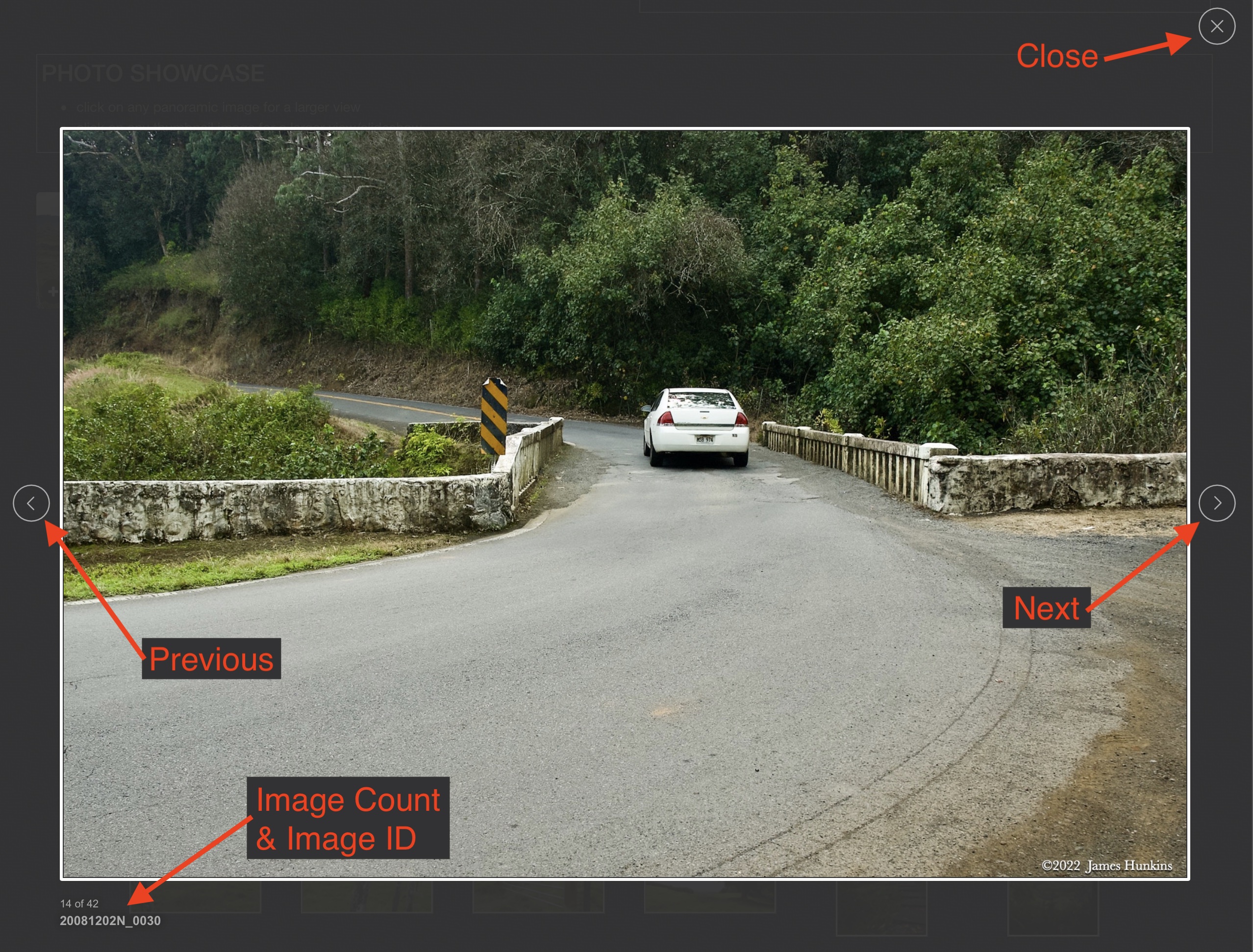Hawaii 2022
Hawai'i - Waterfalls and Mauna Kea
DAY 2 : MONDAY May 09, 2022
It turns out that the fog and mist we encountered in our first night was a preview of the east coast of the island. We noticed at our lodge the evenings tended to be misty or rainy, clearing off later in the morning. The trade winds blow east to west so when they hit the islands, they are forced up forming clouds and rain. Unlike my last trip to Hawaii when they were actually having a rare drought, a typical year in this area sees 84 inches of rain. The people at our lodge were saying that they were having even more rain than normal this year - enough to be getting tired of it.
The first thing we did this day was to visit a few waterfalls. With the rainfall in the area, there are a lot of falls near Hilo. Many are on private land but we enjoyed visiting two areas which are publicly owned. Luckily the clouds cleared off and provided us with a sunny morning.
We started with the Wailuku River State Park which is on the edge of Hilo. Our first stop was Rainbow Falls which is literally right by the parking lot. And then with just a short walk up through the park we enjoyed the Boiling Pots part of the stream where there are smaller cascades and water tumbling over and ‘through’ the rocks. The name came from the fact that some of the water in the stream is coming up from under rocks so it looks to be boiling.
Our next stop was a short drive along the coast to ‘Akaka Falls State Park. We had to pay to park there but it wasn’t much and was very worth it. There is a paved trail with lots of steps going through the rainforest. One of the pictures on this site shows a stream going through tall stand of bamboo. The first falls that we saw was Kahuna Falls (100 ft high) and then in a bit the taller falls, ‘Akaka Falls dropping 442 feet. For a comparison Niagara Falls drops 325 feet.
Once we left the park it was time to head to our pickup point for the tour to the top of Mauna Kea. We ended up back tracking from our prior night’s drive on the highway (Saddle Road - appropriately named as it goes through a mountain saddle between the Mauna Kea and Mauna Loa volcanoes). We parked in the Gilbert Kahele (Mauna Kea) Recreation Area after driving up through some more clouds. There we met our bus and tour guide to the top of the mountain, preparing for our drive from approximately 2000 m [6562 ft] up to 4027 m [13,803 ft) at the top of Mauna Kea. If one considers the real height of Mauna Kea starting at its base on the ocean floor, it is actually 9,330 m [30,610 ft] tall making it taller than even Mount Everest (8,849 m [29,032 ft]).
Loaded up with parkas, gloves and hats supplied by the tour company, our guide started the drive discussing how to adjust for the altitude change we were about to experience (deep steady breaths and drink lots of water) and to let him know if anyone was experiencing any headaches or difficulties. It was a beautiful drive through the colorful formations up the side of this massive volcano. We could see cinder cones below us. Across the valley the younger Mauna Lea volcano shadowed us (it did erupt in late 2022 after we were home; I had seen a lava fissure on it during my 2008 trip).
We stopped at the visitor center to both allow for some altitude adjustment and to eat a nice picnic meal (the hot stew was perfect). From there we drove the rest of the way and got out on top amongst many observatories. Mauna Kea is great for astronomical viewing as it is so high that it rarely has any cloud cover and the air is super dry (even though there were a few skiffs of snow here and there). The temperature wasn’t terribly cold but you definitely needed the coats and stuff the tour company supplied. Amazing considering down in Hilo shorts and tank tops were OK.
Sunsets from that altitude are different from what most people experience. Since the air is dry and dust free and you are actually above the cloud layer, the sun sinks down into the clouds below you. The colors are fairly muted due to lack of dust in the atmosphere. It is a very unique experience.
On the way back down we stopped again at the visitor’s center parking lot where our guide set up two telescopes for night sky viewing, supplying snacks and hot cocoa. He had a new time exposure scope that electronically did multiple captures of very dim objects building up a final detailed image, similar to what many modern phones do with very low light photos. These captured images were shared with us and I was able to do some precessing to reduce the noise that tends to happen in such long exposures. The other telescope was a standard viewing one where we all took turns looking at many distant objects in the sky. A great way to finish off a great day!
PHOTO SHOWCASE
- click on any thumbnail image for a larger view/slideshow











































